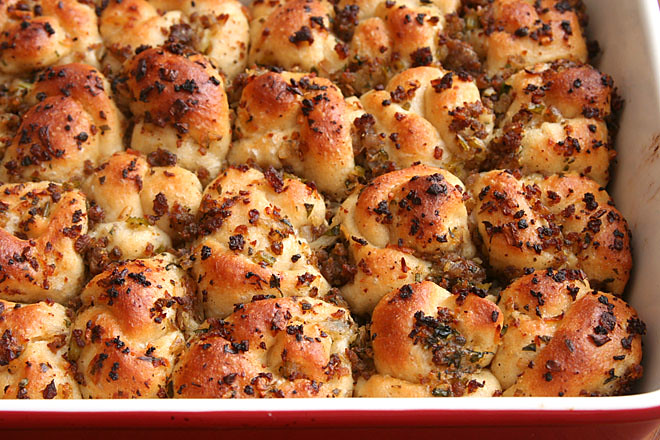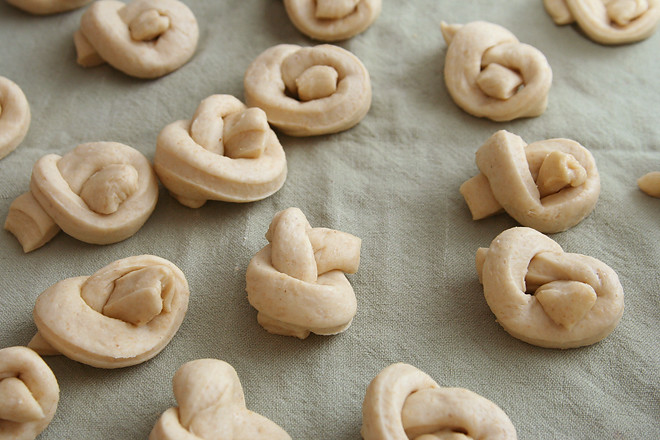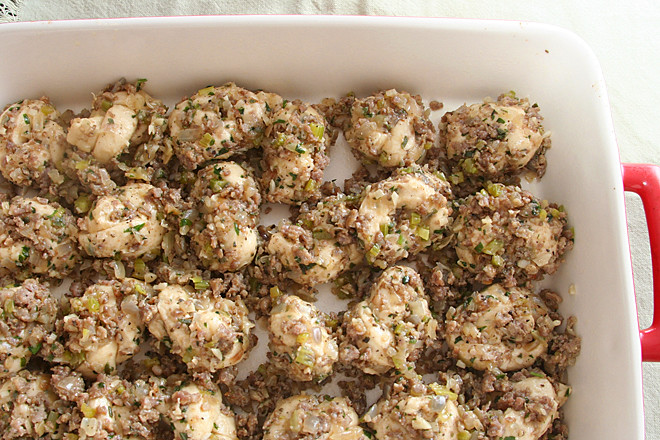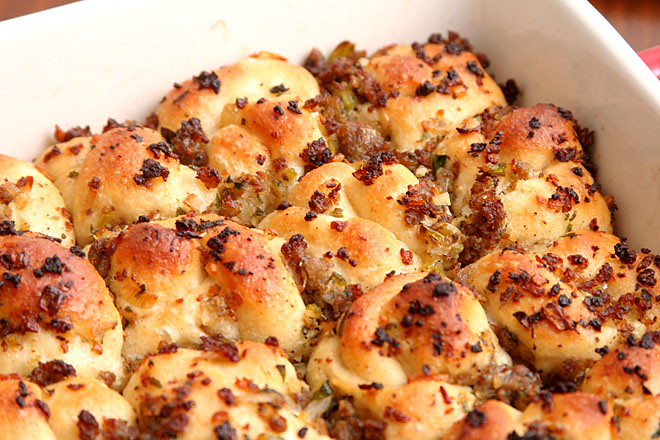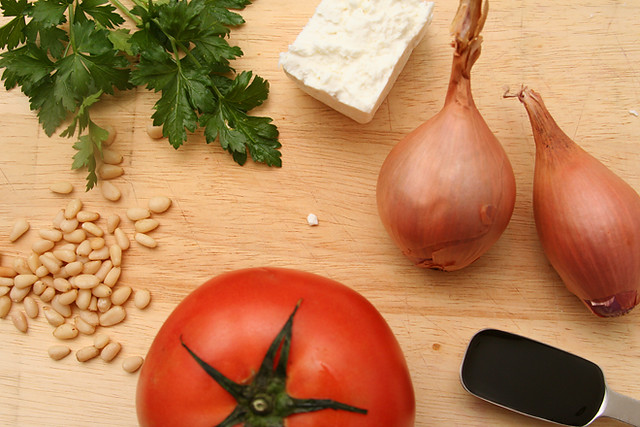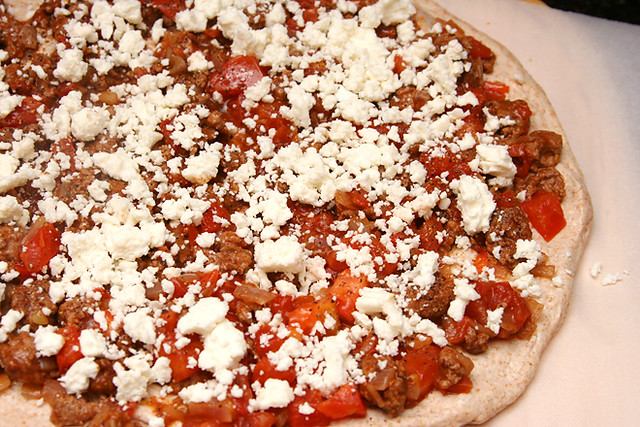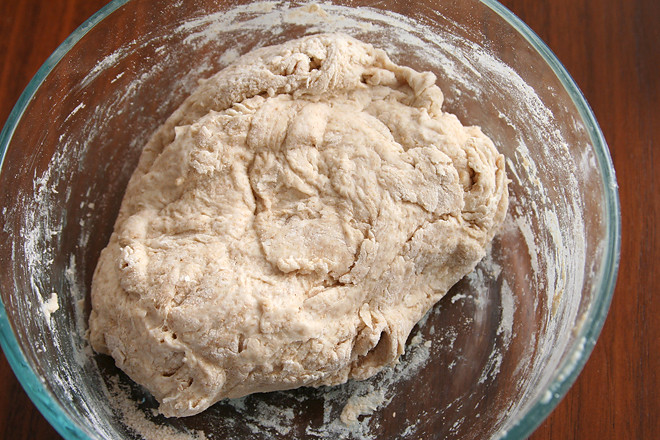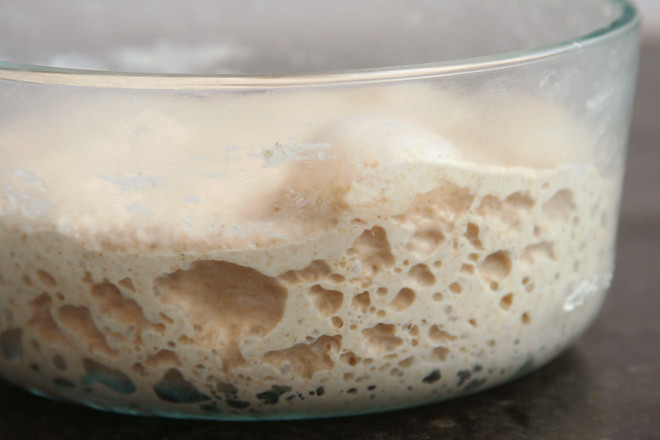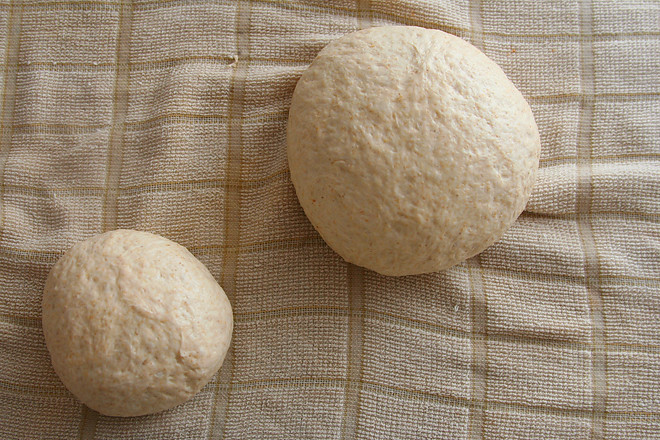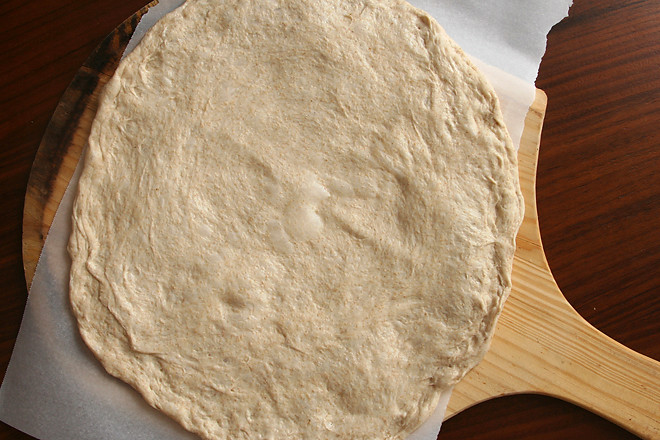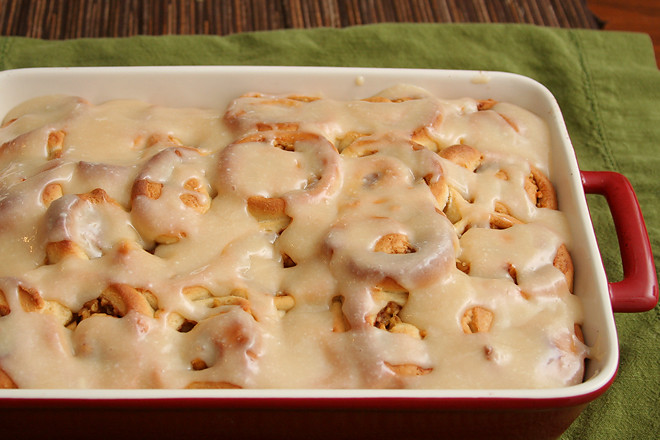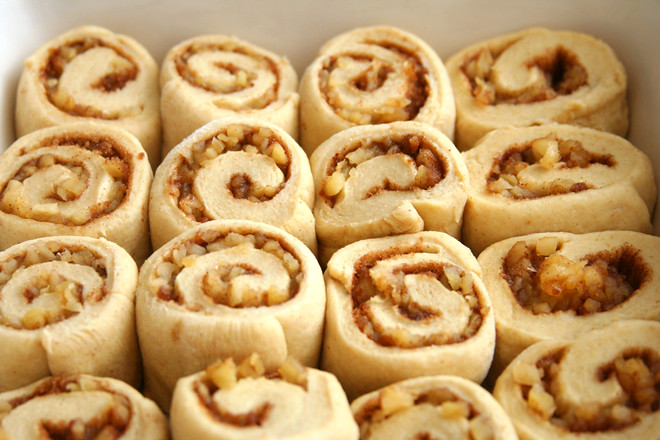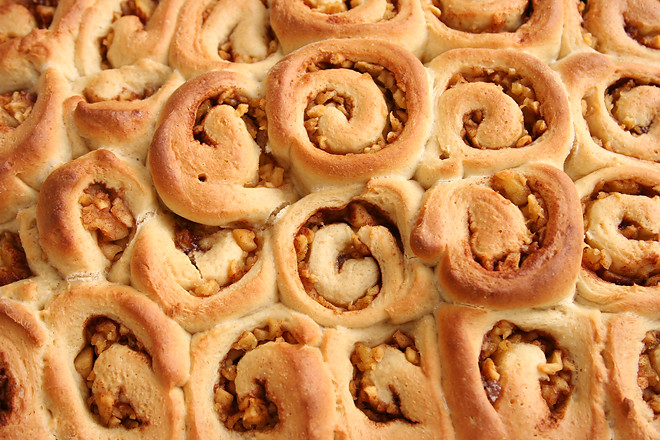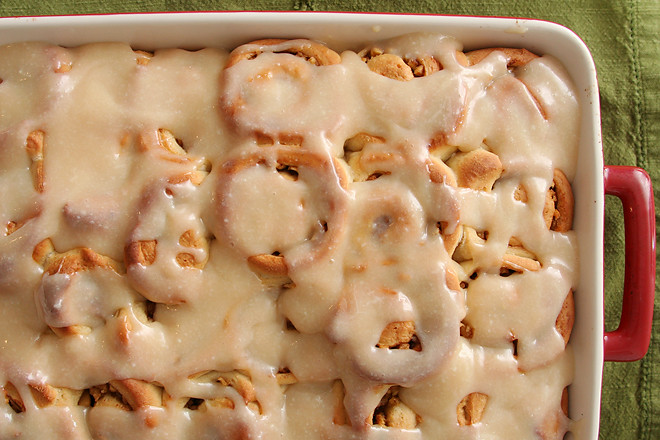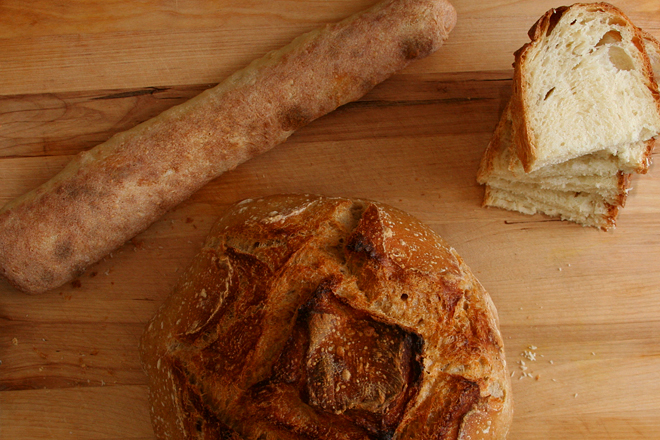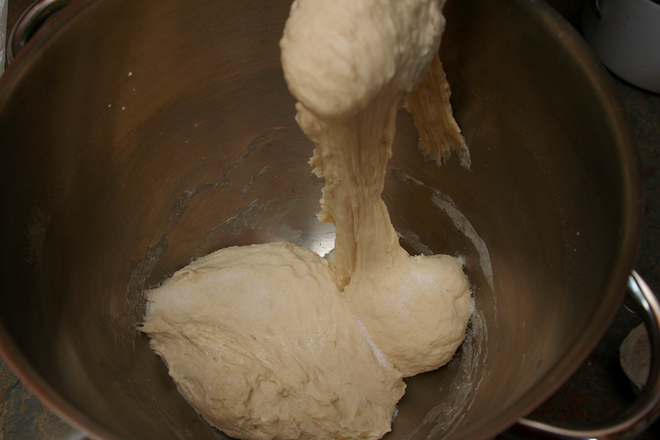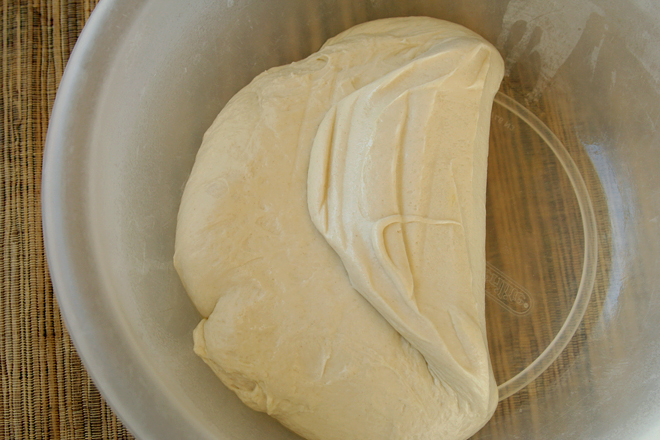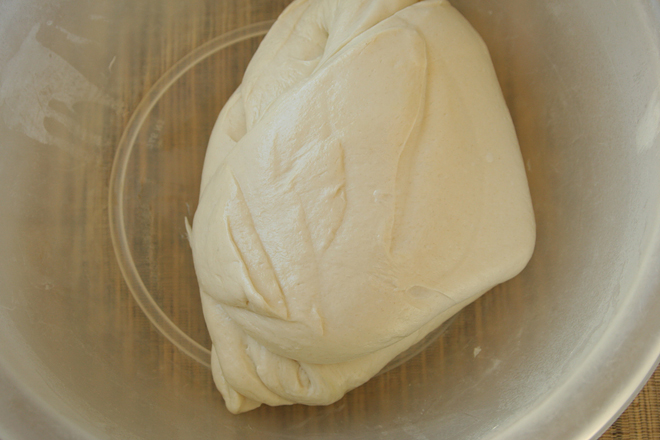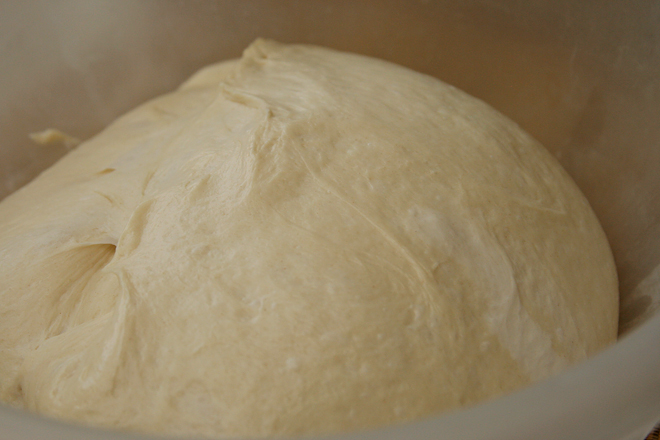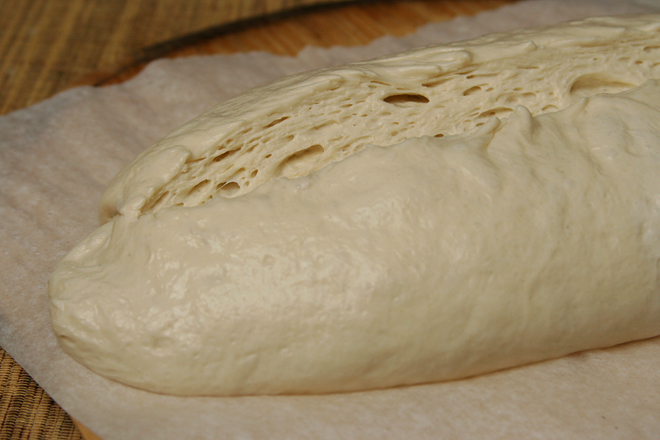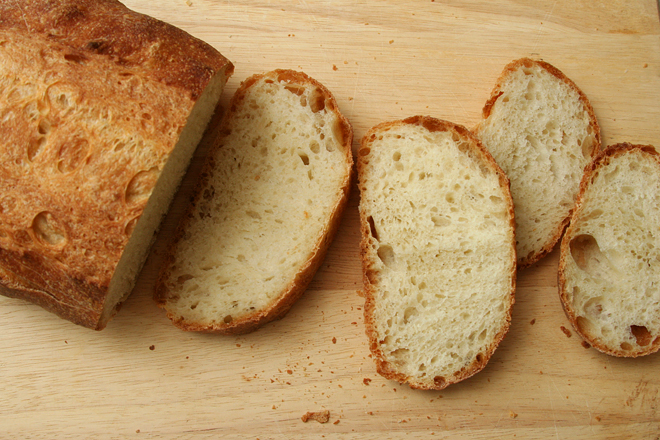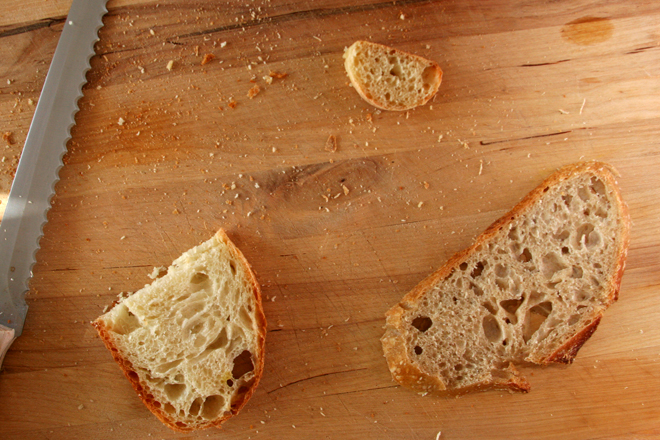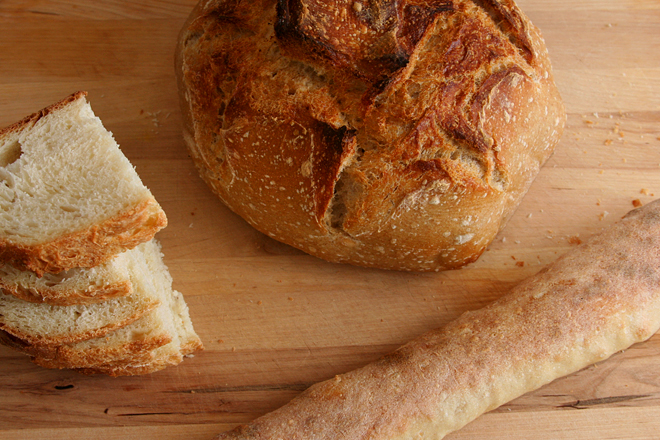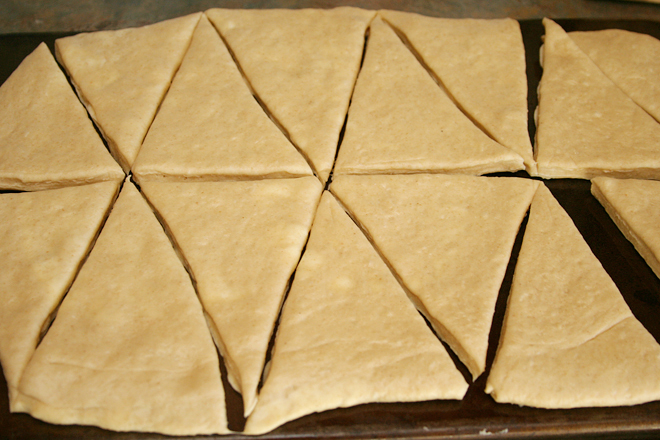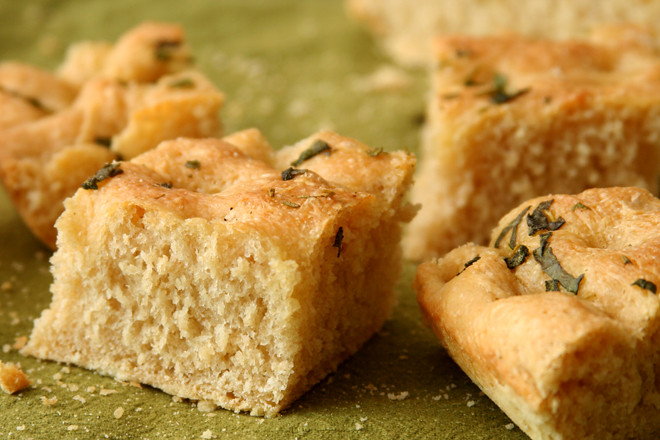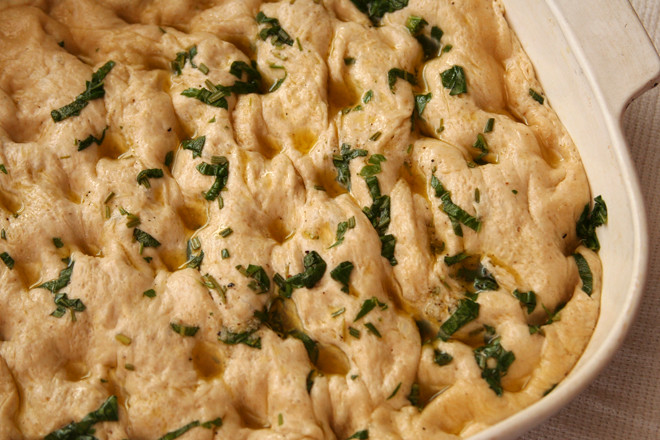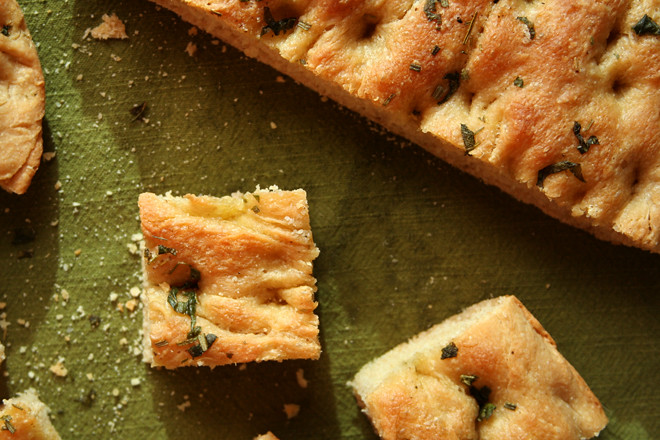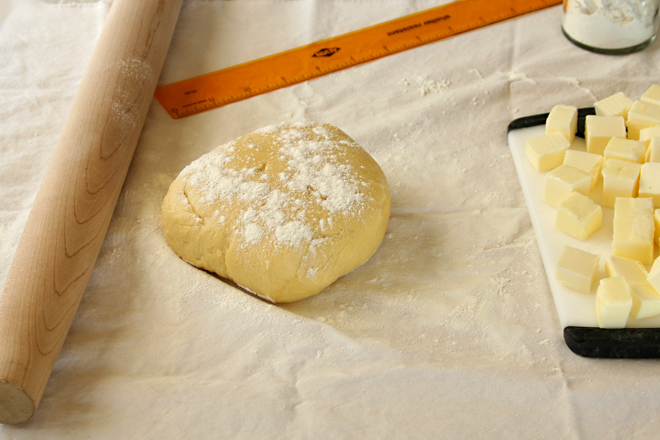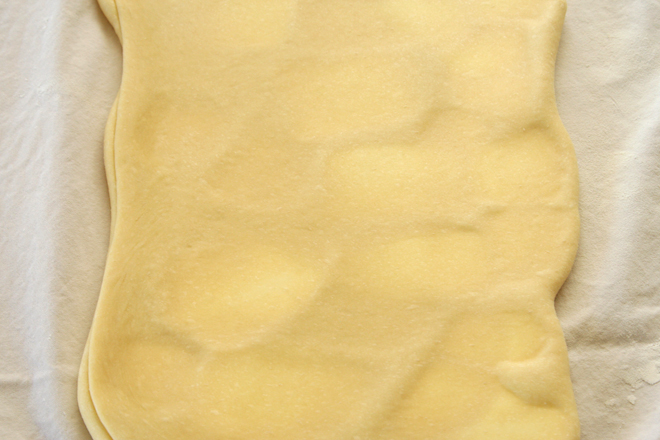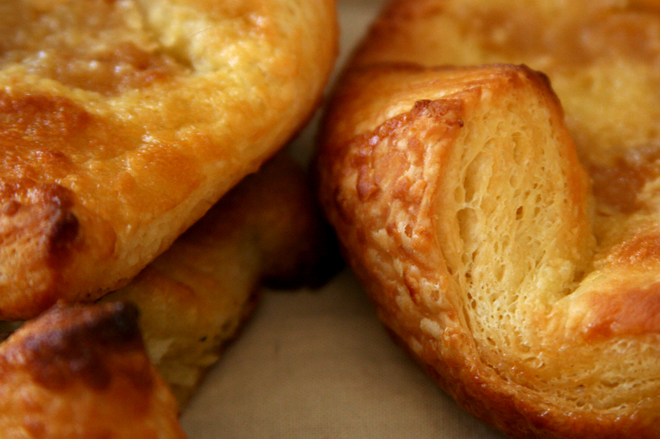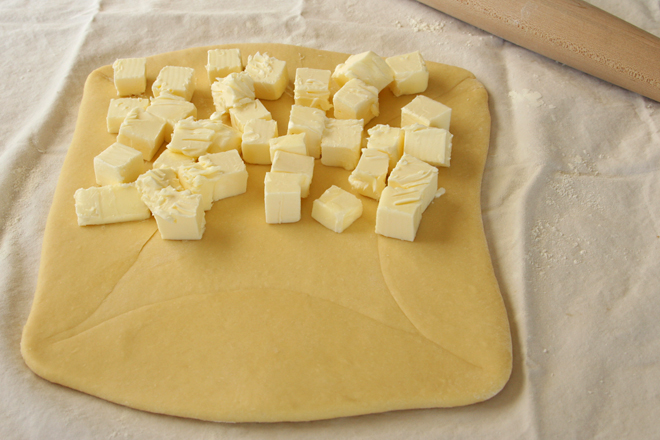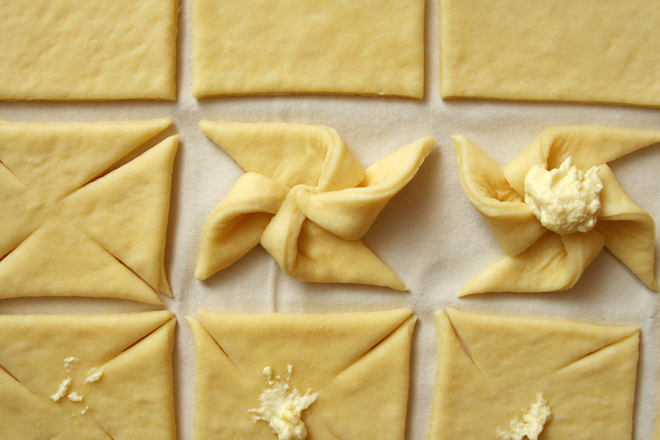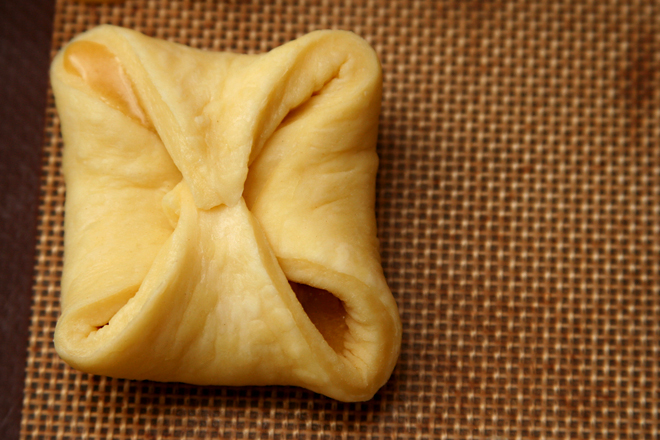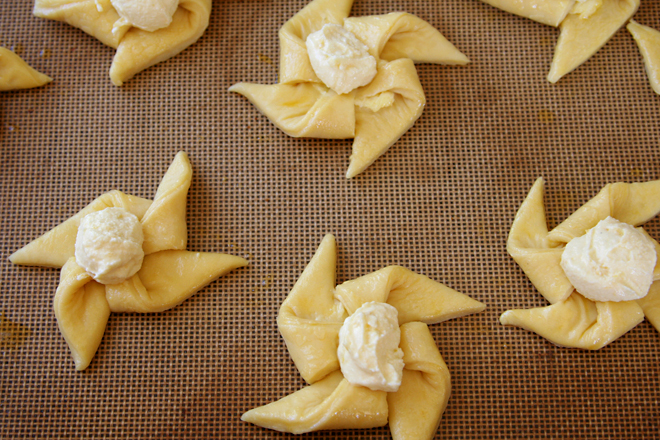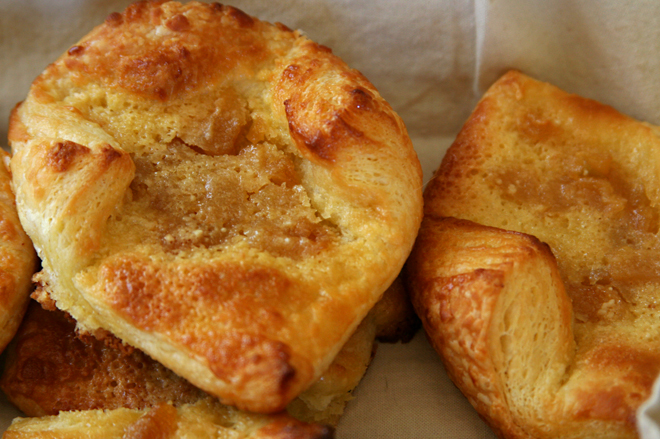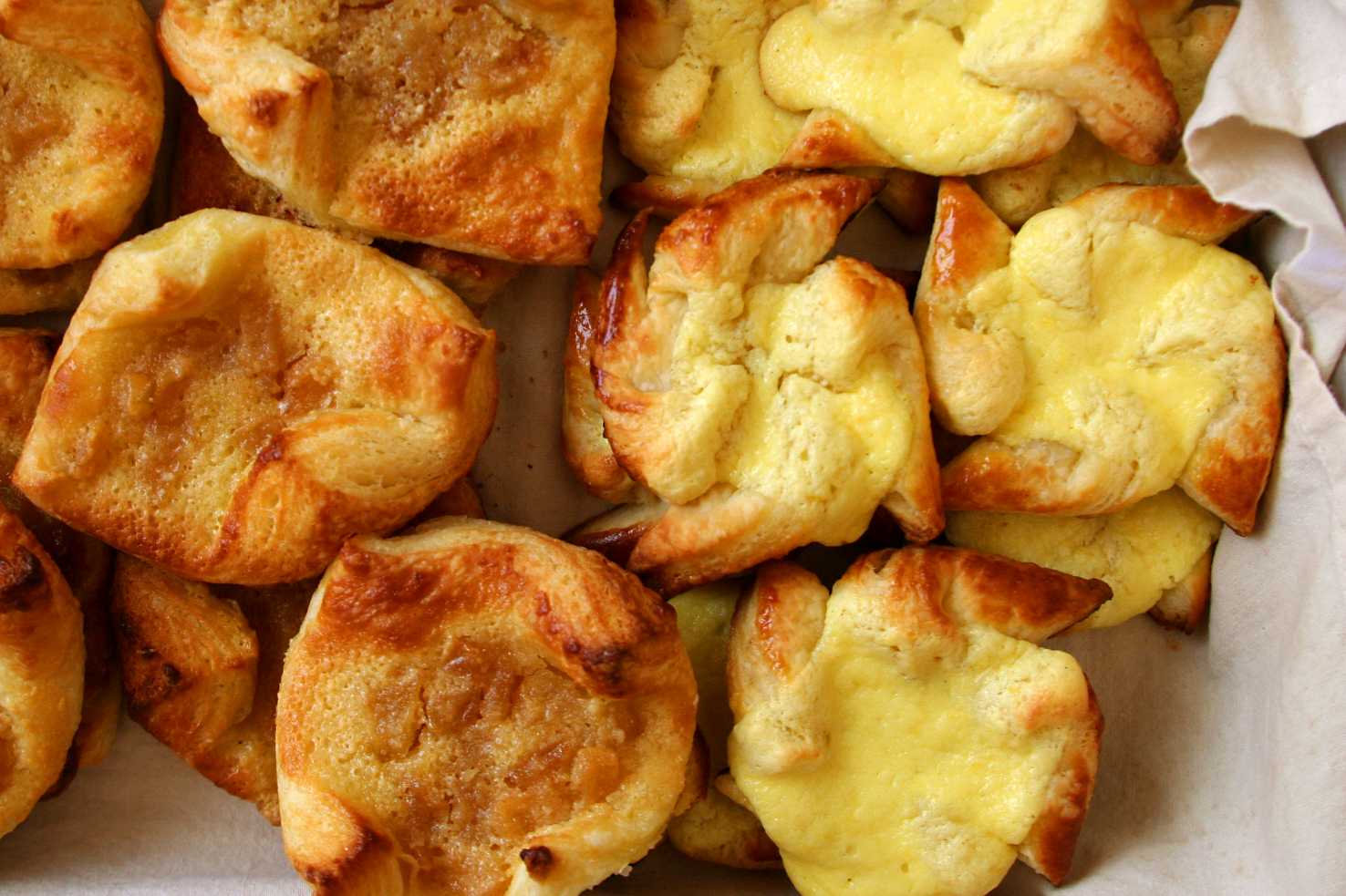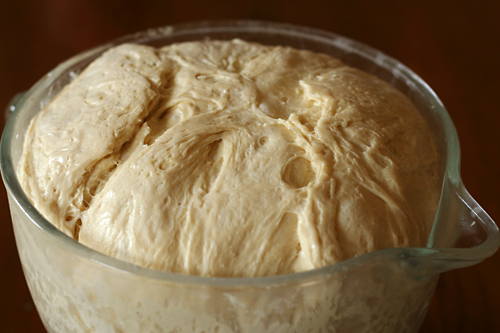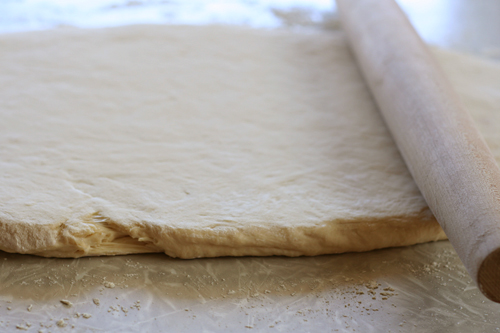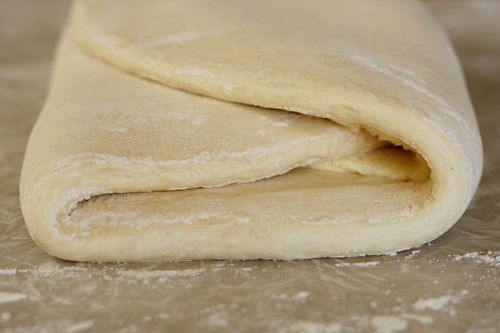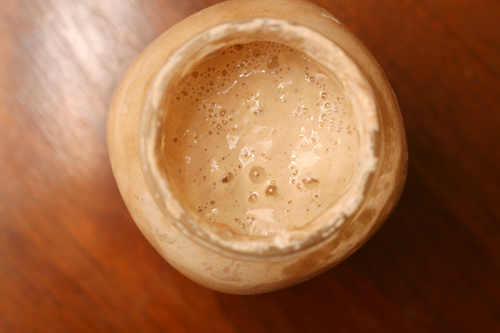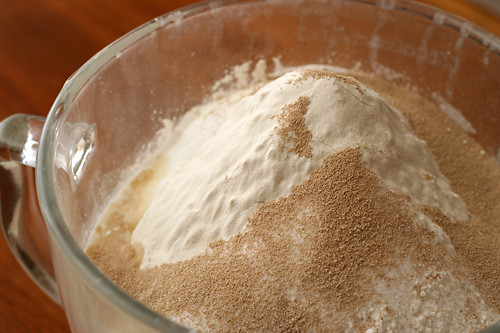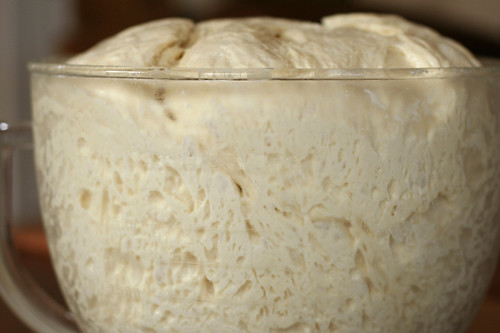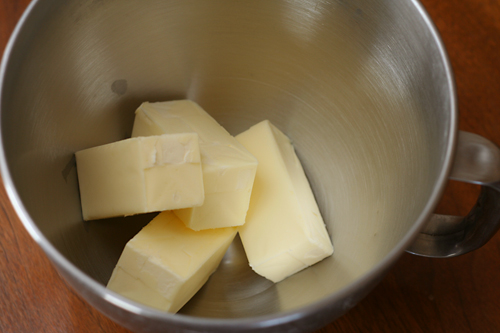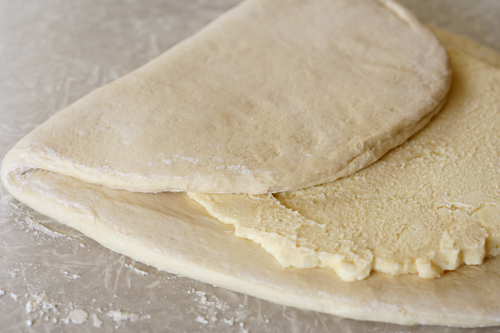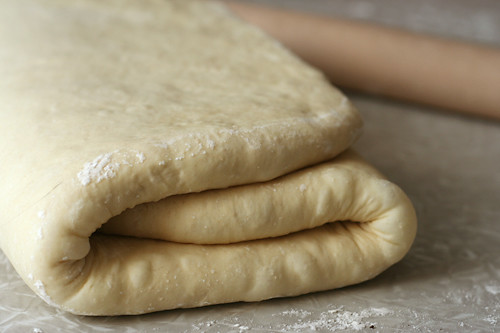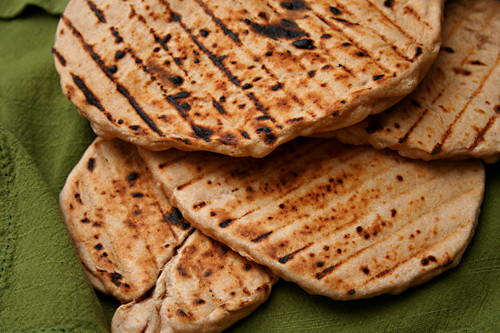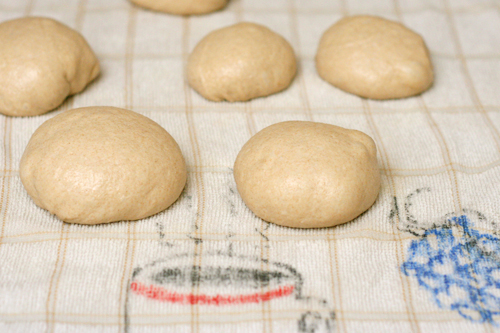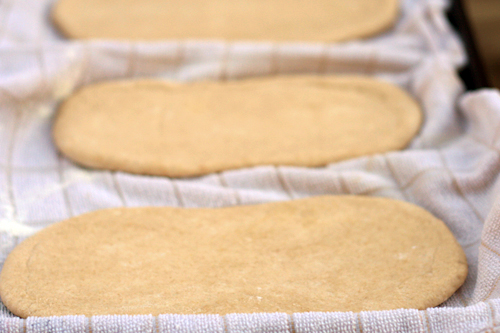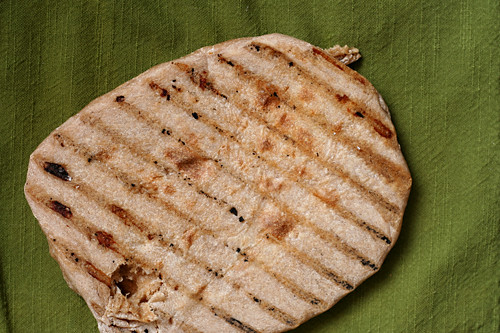There’s a conflict between the recipes you want to make for Thanksgiving because they’re traditional and the recipes you want to make for Thanksgiving because they’re new and interesting. Every year, magazines have to come up with creative Thanksgiving recipes that no one makes because Thanksgiving only comes once a year, and everyone wants their old favorites.
Last November was my turn to host my monthly get-together with friends, and I suggested we do a Thanksgiving theme, but not with our standard recipes. I made a turkey roulade with mushroom stuffing, sweet potato meringue pie, and these stuffing rolls. I don’t know where you’d fit stuffing rolls on the normal Thanksgiving menu – would you replace rolls or stuffing or both? But they were perfect for my nontraditional dinner.
Stuffing rolls are knots – because their irregular shape increases the surface area that can be coated with flavorful ingredients – covered in an herbed sausage and celery mixture. It’s as if you replaced the dried bread cubes in regular stuffing with freshly baked rolls. Wherever you can manage to fit these into your Thanksgiving traditions, they’re worth trying something new.
Printer Friendly Recipe
Pull-Apart Stuffing Knots (slightly adapted from The Food Lab)
You can use 1 pound of store-bought pizza dough instead of making your own bread dough. You can also replace up to half of the flour with whole wheat flour.
Dough:
11 ounces all-purpose flour
½ cup water
1½ tablespoons oil
1½ tablespoons sugar
1½ teaspoons yeast
¾ teaspoon salt
Rolls:
4 tablespoons butter, divided
8 ounces sage sausage or breakfast sausage, removed from casings
1 small onion, finely chopped (about ¾ cup)
1 stalk celery, finely chopped (about ½ cup)
4 medium cloves garlic, finely chopped
¼ cup minced fresh sage leaves
¼ cup minced fresh parsley leaves
Kosher salt and freshly ground black pepper
1. Mix pre-dough. The next day, mix and knead the dough. Let rise slightly and refrigerate overnight.
2. Melt 2 tablespoons butter in a large skillet over medium-high heat. Add sausage and mash with stiff whisk or potato masher to break up into fine pieces (largest pieces should be no greater than ¼-inch). Cook, stirring frequently until only a few bits of pink remain, about 8 minutes. Add onions, celery, garlic, and sage and cook, stirring frequently, until vegetables are softened, about 10 minutes. Add parsley and season to taste with salt and pepper. Transfer contents to a large bowl and set aside until completely cool.
3. While filling cools, make knots. On a lightly floured surface, divide dough into two even pieces. Working with one piece at a time, roll or stretch into an oblong strip about 8 inches long and 4 inches wide. With a bench scraper or knife, cut crosswise into 12 strips. Repeat with other half of dough.
4. Tie each strip into a knot and transfer to the bowl with sausage mixture. Toss and fold with your hands until every knot is thoroughly coated in the mixture. Grease a 9- by 13-inch casserole pan with 1 tablespoon butter. Transfer the knots to the casserole dish in a single layer. Spray with oil, cover tightly with plastic, and set aside until doubled in size, about 4 hours. Alternatively, refrigerate until doubled in size, 12 to 16 hours.
5. When ready to bake, preheat oven to 425°F and adjust oven rack to center position. Unwrap rolls. Transfer to oven and bake until golden brown and crisp, 25 to 30 minutes.
6. When rolls are almost ready, melt remaining tablespoon butter in the microwave or stovetop. Remove rolls from oven and immediately brush with butter.
